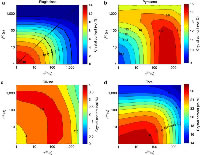Key role for plagio- clase disequilibrium crystallisation in basaltic magma ascent dynamics
La Spina G., M. Burton, M. de’ Michieli vitturi, and F. Arzilli (2016).
Nature Communications, Vol.7, doi:10.1038/ncomms13402
Abstract
Timescales of magma ascent in conduit models are typically assumed to be much longer than crystallization and gas exsolution for basaltic eruptions. However, it is now recognized that basaltic magmas may rise fast enough for disequilibrium processes to play a key role on the ascent dynamics. The quantification of the characteristic times for crystallization and exsolution processes are fundamental to our understanding of such disequilibria and ascent dynamics. Here we use observations from Mount Etna’s 2001 eruption and a magma ascent model to constrain timescales for crystallization and exsolution processes. Our results show that plagioclase reaches equilibrium in 1–2 h, whereas ascent times were <1 h. Using these new constraints on disequilibrium plagioclase crystallization we also reproduce observed crystal abundances for different basaltic eruptions. The strong relation between magma ascent rate and disequilibrium crystallization and exsolution plays a key role in controlling eruption dynamics in basaltic volcanism.


